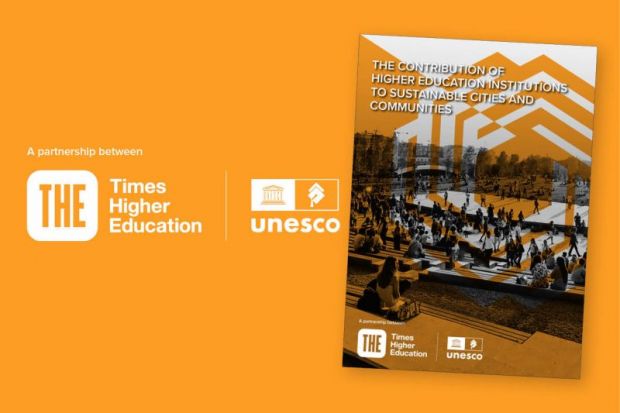There is a big divide between the wealthier higher education institutions in the Global North and the less wealthy universities in the Global South in their ability to support United Nations’ Sustainable Development Goal 11 – sustainable cities and communities, a new study finds.
The joint UNESCO International Institute for Higher Education in Latin America and the Caribbean (IESALC) and Times Higher Education (THE) report ‘The Contribution of Higher Education Institutions to Sustainable Cities and Communities (SDG11)’ finds universities in Oceania, North America and Europe are leading the way on good practice and providing evidence of sustainability. In contrast, universities in Latin-America and Caribbean, North Africa and Western Asia, Central and South Asia and Sub-Saharan Africa might be doing a lot to support sustainable cities but are failing to evidence it.
The report finds higher education institutions (HEIs) can play a key role to achieve Sustainable Development Goal (SDG) 11 by adapting their teaching, learning, research and administration to proactively shape their local and regional governments, stakeholders and citizens.
Universities are supporting cities and the communities they serve in sustainable transport, housing, culture, outreach, urban regeneration and better energy use.
Around 60% of HEIs declare they promote sustainable commuting but only half of those had quantitative targets which suggests universities may be promoting sustainable commuting but those initiatives are often not part of an institution’s strategy with the necessary monitoring and time-bound benchmarks.
Around 70% of HEIs provided at least some evidence of offering affordable housing to their students. However, the regional averages varied widely from close to 100% in Oceania to less than 50% in Latin America and the Caribbean.
Around two-thirds of participating universities made a contribution to the arts and heritage through performances and programmes, with more than half providing specific evidence and around 60% of them conducting activities to record and preserve cultural heritage. In both cases, Central and South Asia was the only region falling significantly behind the global average, reaching only 20% in each.
Dr Ishan Cader, THE’s Director of consultancy and report co-author, said:
“Universities in Oceania and North America and Europe are leading the way in sustainability in cities. As they are far wealthier than universities in most parts of the world, in particular than those in Sub-Saharan Africa, they should be far more collaborative with their colleagues in that part of the world by sharing their best practices on sustainability and working together to co-produce research and solutions to the global environmental crises.
“Research on SDG 11 shows universities might be doing a lot of good things in supporting sustainable cities but they need to do much more to evidence it. However, where there is evidence there’s some really fantastic practice.
“Universities must understand how cities interact with local municipalities to ensure local impact.”
Among the report’s recommendations includes the need for partnerships and collaboration between HEIs and local or national governments, as well as private stakeholders and the broader community, to reach the full potential of higher education’s contribution towards SDG 11.
In addition, the report recommends HEIs increase its research related to SGD 11, for buildings and infrastructure to follow the highest environmental and efficiency standards and the regular monitoring and evaluation of SDG 11-related targets and ensuring the sustainability of the most impactful activities.
Data from the report comes from THE’s Impact Rankings 2023, which assess universities against the UN’s 17 SDGs. For SDG 11 860 institutions provided data. Also included are four good practice case studies from: Aswan University (Egypt), National Taiwan University (Taiwan), University of Johannesburg (South Africa) and University of São Paulo (Brazil).
What universities are doing to reach SDG 11, and the other SDGs, will be discussed at THE’s Global Sustainable Development Congress in Bangkok, Thailand from the 10–13 June 2024. The event brings together global thought leaders and innovators to discuss urgent solutions to the sustainability emergency. Get your tickets here.
***ENDS***
